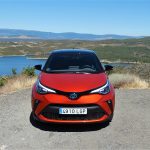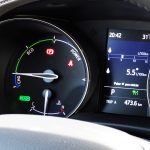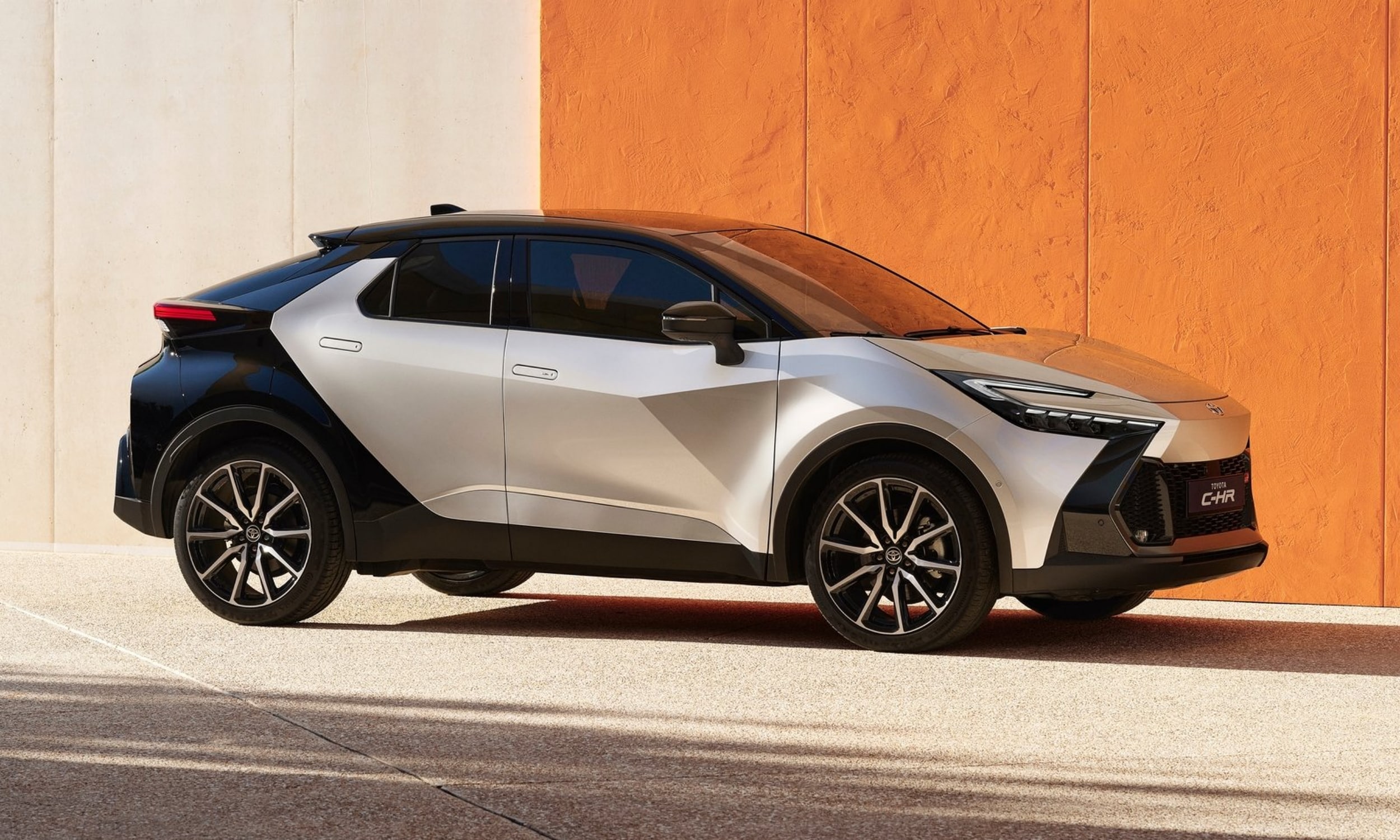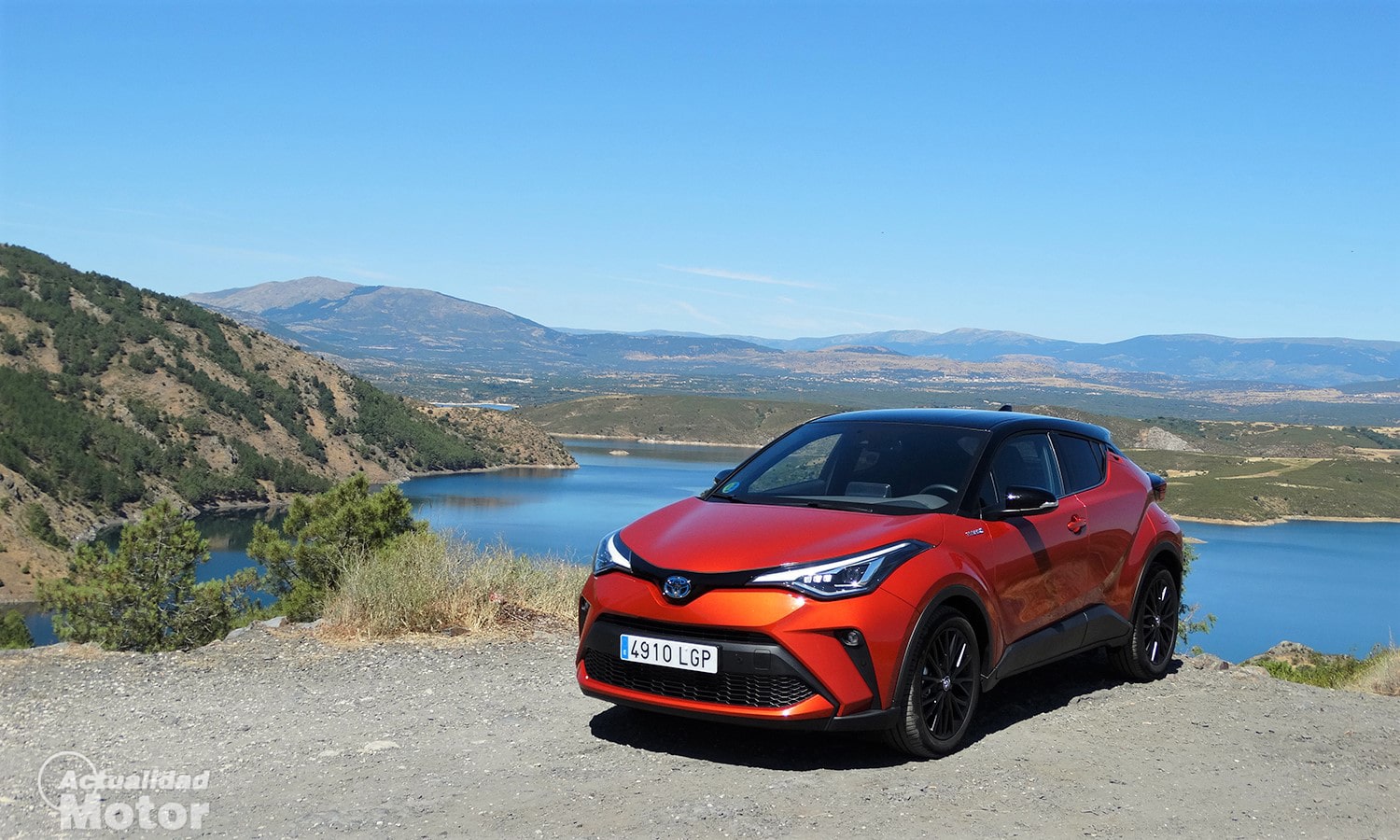
El Toyota CHR it revolutionized the market when it landed in dealerships, back in the fall of 2016. Its aggressive, daring and technological design, but without being excessively shocking, liked many from the first moment. If we add to that that it belongs to the fashion segment, that of the SUVs and crossovers, and on top of that it's a hybrid... Indeed, quite a commercial hit.
But Toyota knows that time is passing and that you have to put a little makeup here and there to rejuvenate yourself. Thus, in November 2020 we had a first contact with the makeover This Toyota through Portuguese lands in its international presentation. We have now decided to examine it in depth with a experiment a week, getting on a Toyota C-HR 180H Kaji Edition. We started!
rejuvenating makeup
As we said, it has not undergone a generational change, but a restyling. It is because of that there are no major changes aesthetically,but certain nuances that update it to continue maintaining the attractiveness that characterizes it. Thus, at the front we find a new design for the bumper and the LED headlights. In addition, the placement of the LED fog lights has also been modified. At the bottom a new black lip is added.

For its part, the side hardly undergoes modifications beyond new wheel designs and very light details. However, on the back you can see the new style of the darkened LED taillights, with a new light signature, being communicated by a slight spoiler in black. To this we must add the new rear bumper, which is more robust and a kind of "diffuser" in the lower area.
In this case we are testing the Kaji Edition version, which incorporates this two-tone bodywork with an orange base tone and a black roof, as well as specific 18-inch black wheels. Finally, the Toyota C-HR measures 4.395mm long, 1.795 wide and 1.555 high, with a wheelbase of 2.640 mm.
Infotainment system remains unfinished business
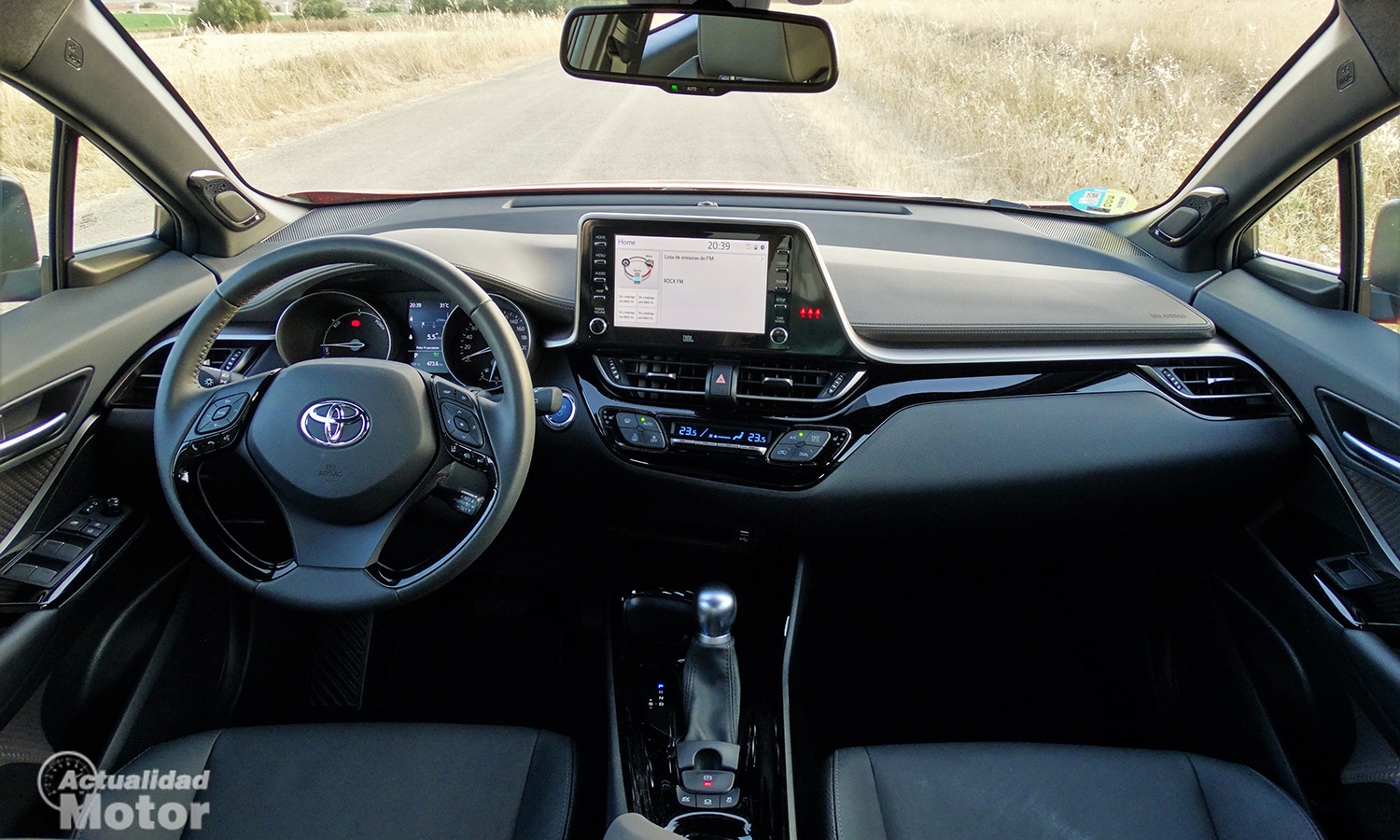
The exterior does not change much, but the interior does less. You have to look at the details to differentiate it from its predecessor. To find these modifications we must look, for example, in the renewed central screen of the instrument panel. I think that Toyota could have made a greater effort and completely revamped the frame because, although it is easy to understand, it lags behind most of its rivals.
Do not expect great improvements at the level of infotainment. Toyota, like other Japanese firms, is still a bit lame in this regard. Its central 8-inch touch screen isn't fast, nor does it have slick graphics or features. Of course, we must recognize that it is a step Apple CarPlay and Android Auto integration, something that was always missing a lot in this model.
Regarding the materials, although there is hard plastic combined with some parts in soft materials, they convey a good feeling. There are no creaks at any point and it gives the impression that They will hold up well over the years.. In addition, it has a very personal design. Of course, unfortunately for us, there is always the always dirty shiny black on the edge of the screen, around the air conditioning or on the center console, next to the change.
Rear seats and trunk with little amplitude
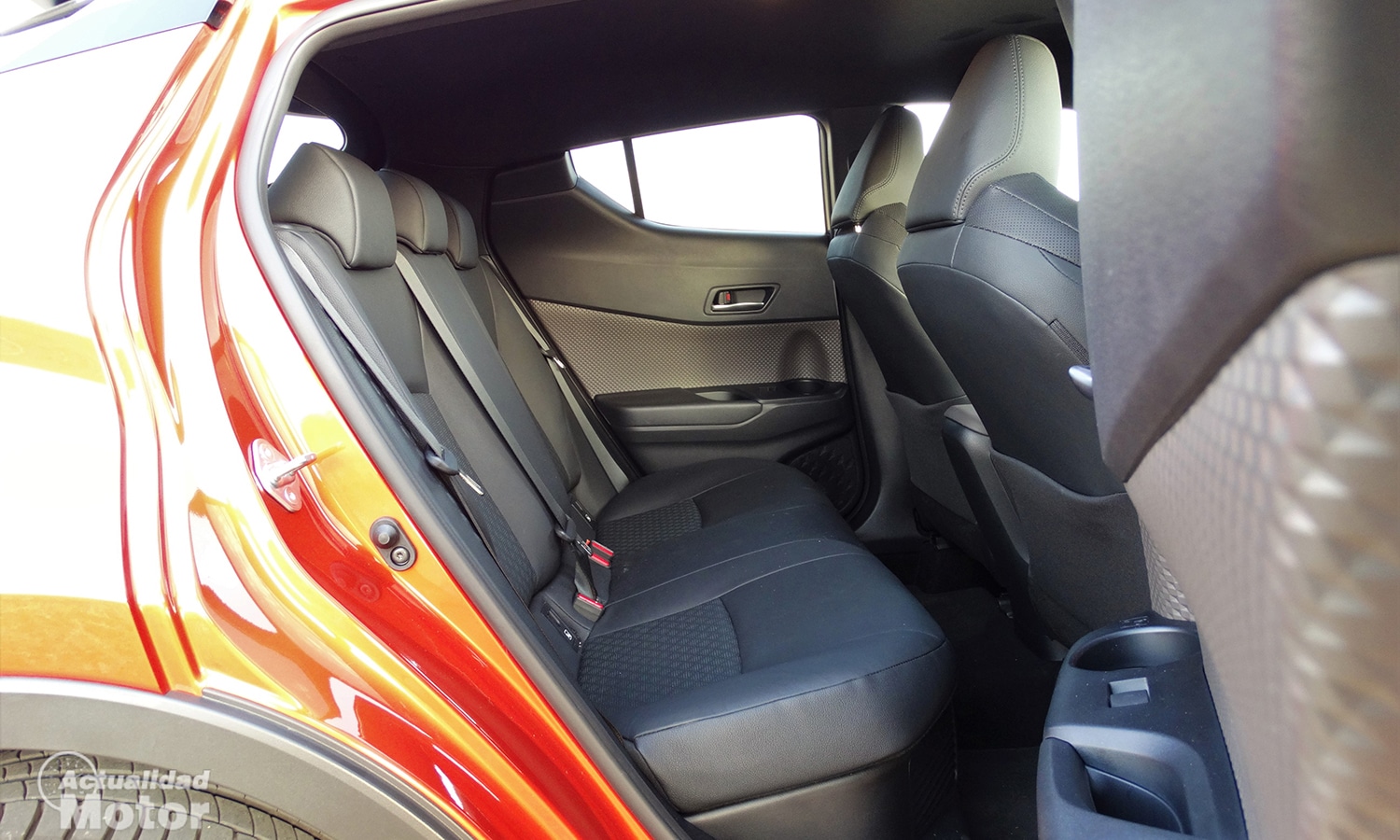
All the front seats, as usual in almost all cars on the market, are enough for two large adults. However, we have the feeling that it is not one of the most spacious cars here in front because of the raised dashboard, the little glass surface or the interior upholstery of the roof in black.
If we go to rear seats, this feeling becomes reality. The rear seats are fair and, at least for me, can be somewhat overwhelming. There is not much room for the knees and neither in height. To this we must add that there is little glass in the rear doors, so we have a dark and somewhat closed interior. Definitely not, for a car almost 4,4 meters long, there's not much room back here.

Meanwhile, in the trunk we find a total load capacity of 358 liters with this 2.0 Hybrid engine. The 1.8 Hybrid reaches 377 liters, this capacity being due to the size of the batteries. The space for suitcases or large packages is not very usable, although it has the positive point that under the floor there are important holes to hide or protect some smaller items.
Mechanical offer: Always with an Eco label!
And we make the leap to the mechanical offer. In Spain, the Toyota C-HR is only available with two engines, and both are hybrid. All C-HRs sold in our country have DGT Ecolabel. As you can imagine, they are conventional hybrids, that is, not plug-in. They are always front-wheel drive and with automatic transmission type e-CVT.
The most accessible option is the 125H, which develops a combined power of 122 hp. The gasoline engine block is an atmospheric 1.8 that works on the Atkinson cycle. On paper, it has a combined WLTP consumption of 4,8 l/100 km. Its benefits are a 0 to 100 km/h in 11 seconds and a maximum speed of 170 km/h.
The variant 180H is the newest, having been incorporated into this restyling. A heat engine is used 2 liters combined with a new electric drive, which in turn also releases new batteries. In this case develop 184 CV, is capable of doing the 0 to 100 in 8,2 seconds and its top speed is 180 km/h. Consumption approved for this version is 5,3 litres.
At the wheel: progressivity and little thirst
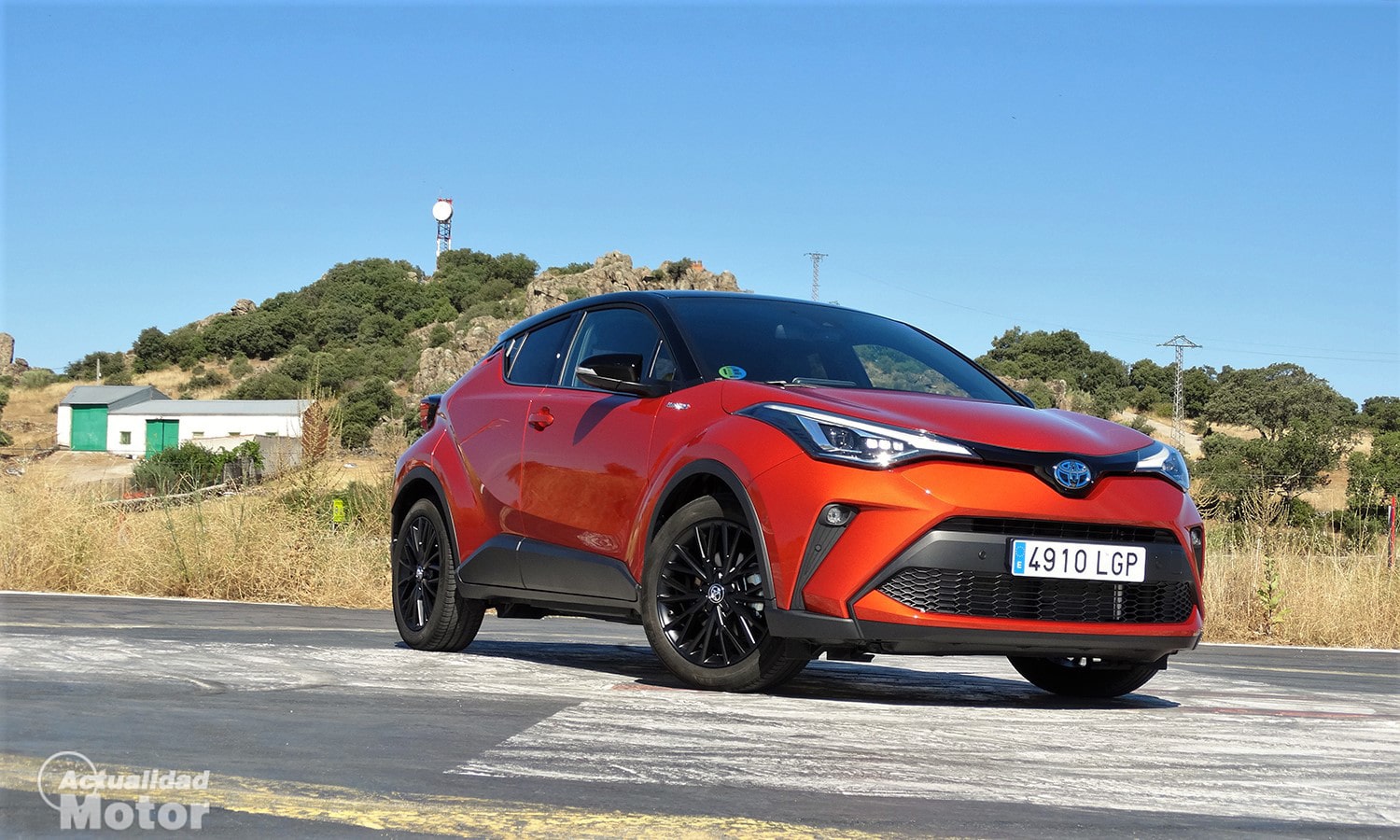
As the 2 hp 180-litre 184H engine is new in the Toyota C-HR, we have chosen this mechanism to test it thoroughly. The Japanese brand says that, among other things, the ride quality and overall insulation. In addition, as this mechanism is more relaxed, by offering more torque and power, the CVT transmission does not rev the engine as much, something that also improves ride comfort.
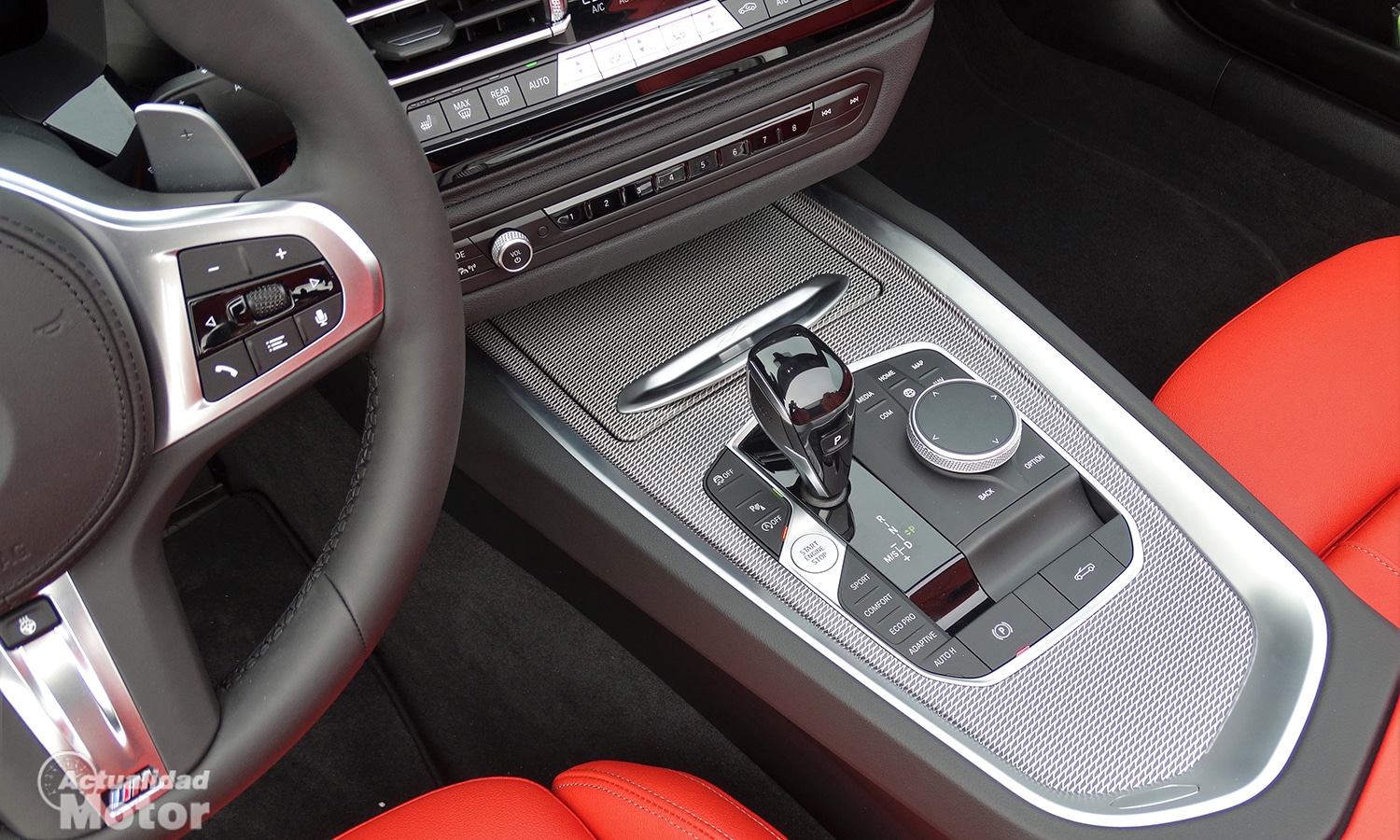
That extra performance translates into greater solvency when traveling. We have more acceleration capacity when we push the pedal to the floor and a best answer at half loads. The recoveries are faster, which is much appreciated when overtaking, joining a fast lane or when encountering a steep slope.
In any case, if we accelerate very hard, the gearbox revs the engine quite a lot and the sound is not entirely pleasant for most. On a journey with four occupants and a long and very noticeable slope, one of the companions used a very classic expression: “you are going to burn it".
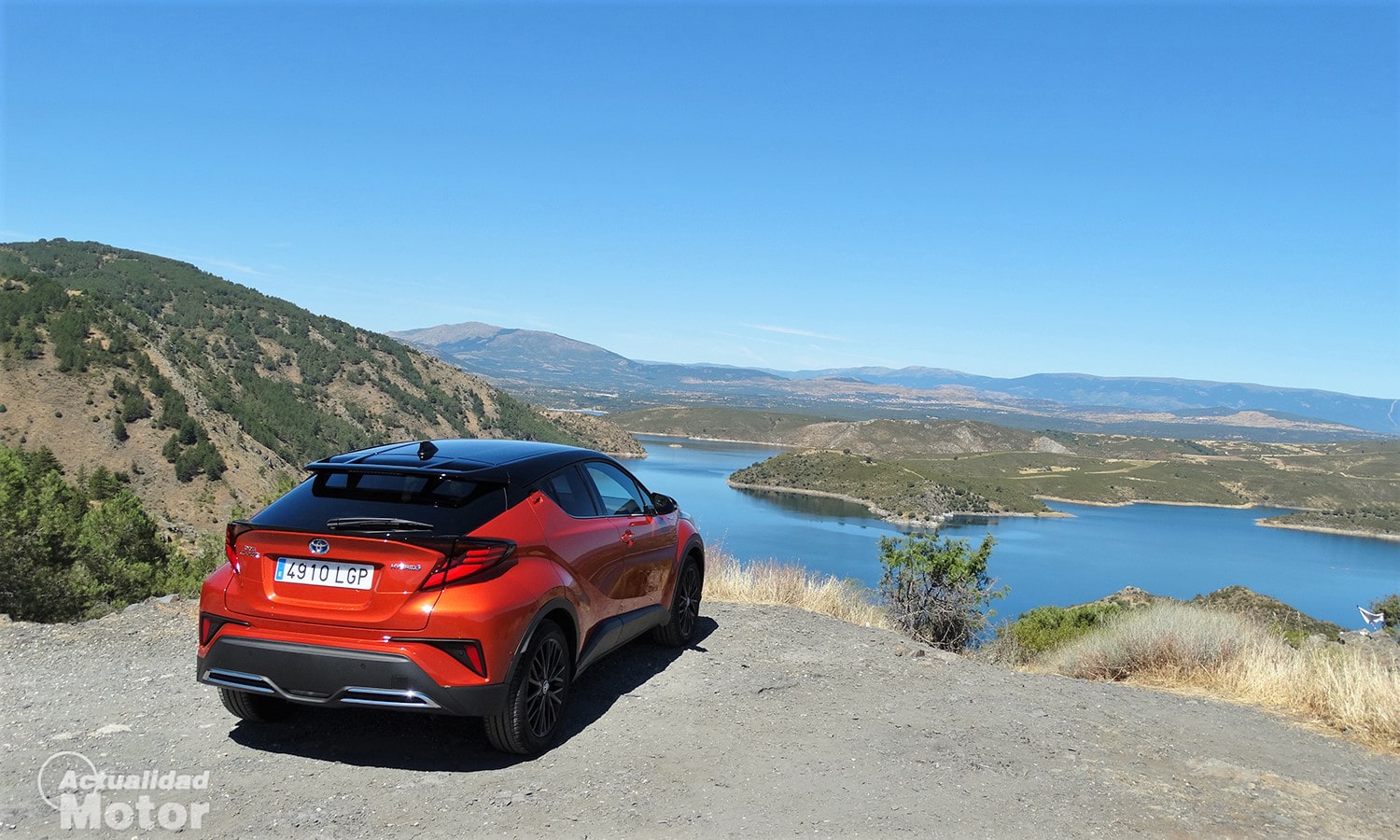
However, at constant speeds -and legal- by motorway and without great slopes, engine noise goes completely unnoticed. You can see that higher torque at mid-range and the extra insulation. Hardly rolling or aerodynamic noise is filtered either, which is always appreciated.
Probably the terrain where he feels least comfortable is in the mountain passes. And not by tuning the chassis. On ascents, especially if we go with several occupants, the engine revs and, honestly, I don't usually like it. Despite this, it gains speed relatively quickly. On the opposite side, when it comes down, the brake pedal feel is not quite successful. It is difficult to measure accurately since a "jump" is noted in the transition from regenerative braking to conventional braking.
Despite the above, the chassis is one of its best benefits. Since it has a lot of weight in the lower area due to the batteries, the body barely sways at a normal rate. This allows Toyota not to use a particularly hard suspension, although it is not soft either, achieving good comfort. And that it has 18-inch wheels, if they were smaller it would be even more comfortable, although the aesthetics would lose some points.
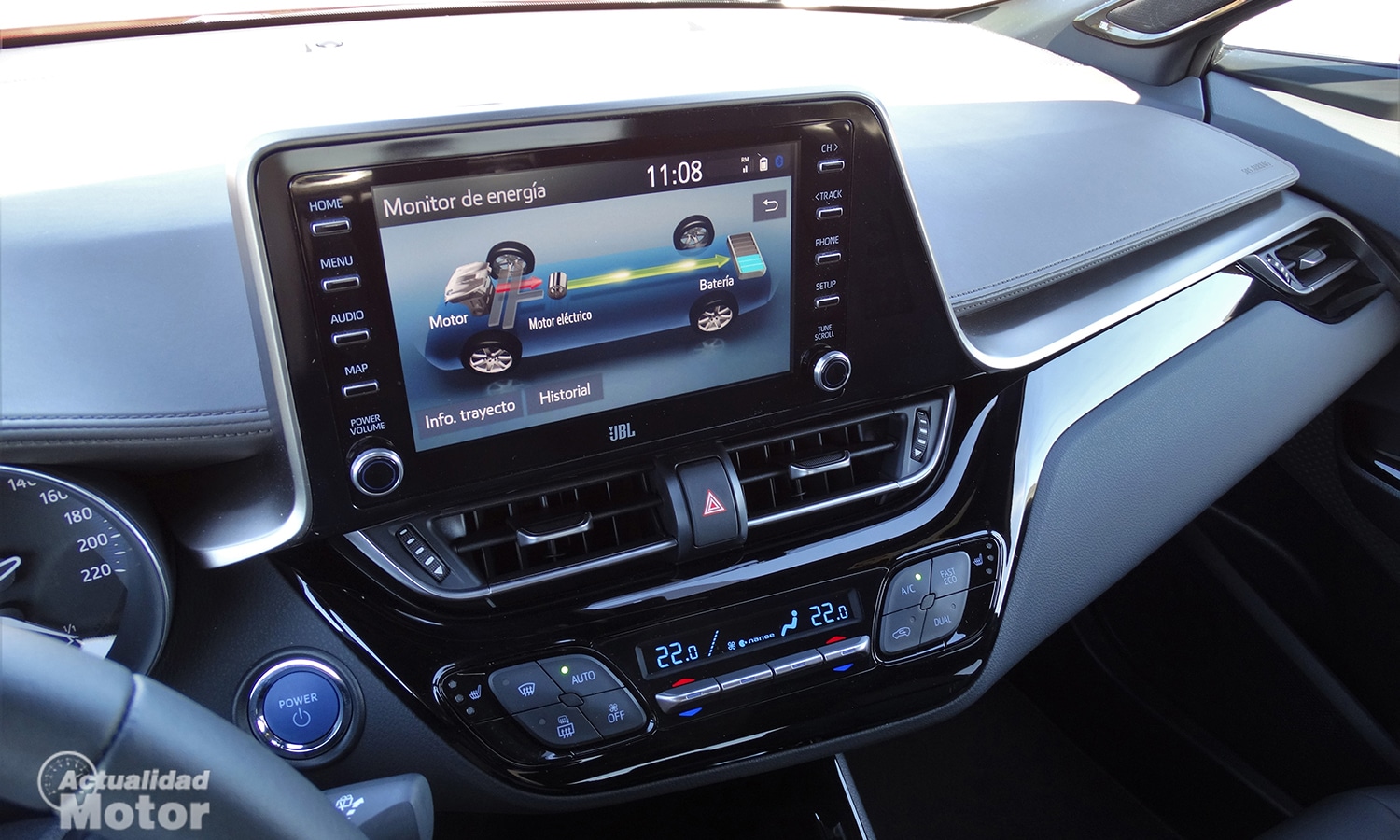
In town it feels agile and we will practically never take advantage of its full power. Once again I must mention the bad feeling of braking. It is difficult to measure accurately and we have to make corrections in the pressure on the brake if we do not want to stick our nose out at a Stop or notice the uncomfortable change in inertia when stopping. I think Toyota would have to work more on that aspect. When starting the march, the opposite happens, it is very, very smooth.
Another aspect that penalizes him is the little glazed area. In normal circulation it is not too noticeable either, but when driving through narrow areas, or when reversing to park in a complicated place, we have poor visibility. Our unit has parking sensors and a reversing camera, aids that always make work much easier.
Adjusted consumptions that barely vary
Without any doubt, one of the best sections of the Toyota C-HR is its low consumption. During our test, with about 800 kilometers traveled, the final mixed consumption has been located in 5,6 l / 100 km. It has driven smooth many times, as you have to try to drive a hybrid model to make the most of its efficiency, but without looking for maximum savings. When it has been necessary to accelerate fully, it has been done, and it has not been in a few occasions.
The good thing about these hybrid cars is that consumption varies little between urban and highway use. Logically, the electrical system works much more in the city, allowing us to save many tenths. On the highway, at legal speed, it is normal to be around 6 or 6,2 l/100 km. Therefore, from my point of view, it is a great option.
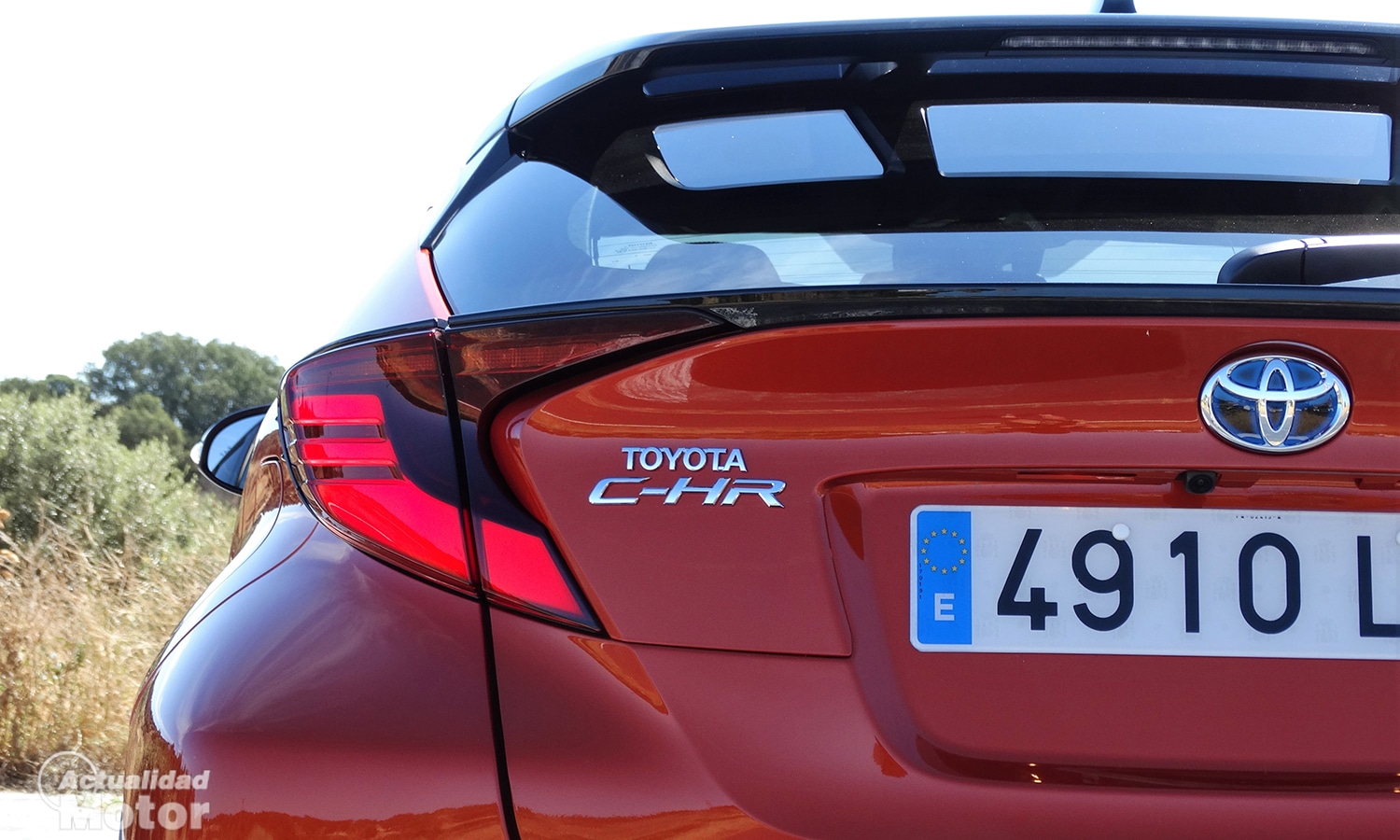
Something that should always be taken into account when going from a traditional car to a hybrid one is that, in order to achieve low consumption, we have to adapt our driving a little. It is nothing exaggerated, but if we want to save fuel we have to do our part. So that you fully understand me, the best thing is that you take a look at the article with a video tutorial that I leave you just below.
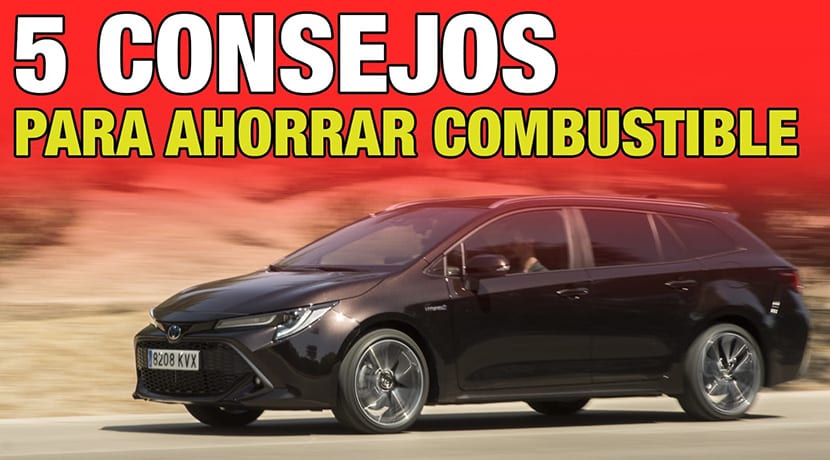
Conclusions
We are concluding and doing a summary to this test of the Toyota C-HR 180H. Using logic, the C-HR is not the most sensible car on the market. It measures 4,4 meters, but it is not very spacious and it does not have a large trunk. It is also not one of the cheapest options on the market. It has an urban approach, but its visibility to the rear is not good.
However, its groundbreaking design, its Eco label and Toyota's experience in hybridization have made this model a real success in sales. In addition, it comes very well equipped in terms of security. Nearly 450.000 units sold at European level, of which around 45.000 have been registered in our country. These data make it clear that not everything is bought using logic, but the heart. Below you have all the equipment and prices.
Equipment Toyota C-HR

Active
- 17-inch wheels
- puncture repair kit
- shark fin antenna
- Black window frame trim
- Keyless entry and start
- Auto-folding heated mirrors
- Light and rain sensors
- Rear spoiler
- Reversing camera
- Unintentional Lane Change Assist
- Signal recognition
- automatic high beams
- Adaptive cruise control
- LED daytime running lights
- LED headlights
- front fog lights
- mobile integration
- Bluetooth
- 6 speakers
- 2-inch Toyota Touch 8 Multimedia System
- USB Port
- Electric parking brake
- Leather gear knob and steering wheel
- Dual zone air conditioning
Advance (add to Active)
- 18-inch two-tone wheels
- Chrome window frame trim
- Darkened rear windows
- Exterior mirrors with welcome light
- Front and rear parking sensors with braking function
- blind spot detector
- Rear Cross Traffic Alert
- 4,2-inch TFT multifunction screen
Dynamic Plus (adds to Advance)
- side trims
- Headlights with LED light guide
- Intelligent parking assistance system
- Automatic headlamp height adjustment
- LED taillights
- 9 speakers
- JBL Premium Audio System
- Driver's seat with electric adjustments and lumbar adjustment
- Heated front seats
Kaji Edition (adds)
- 18-inch alloy wheels in black
- Kaji two-tone bodywork and black roof
- black leather interior
- LED front fog lights
Toyota C-HR Prices
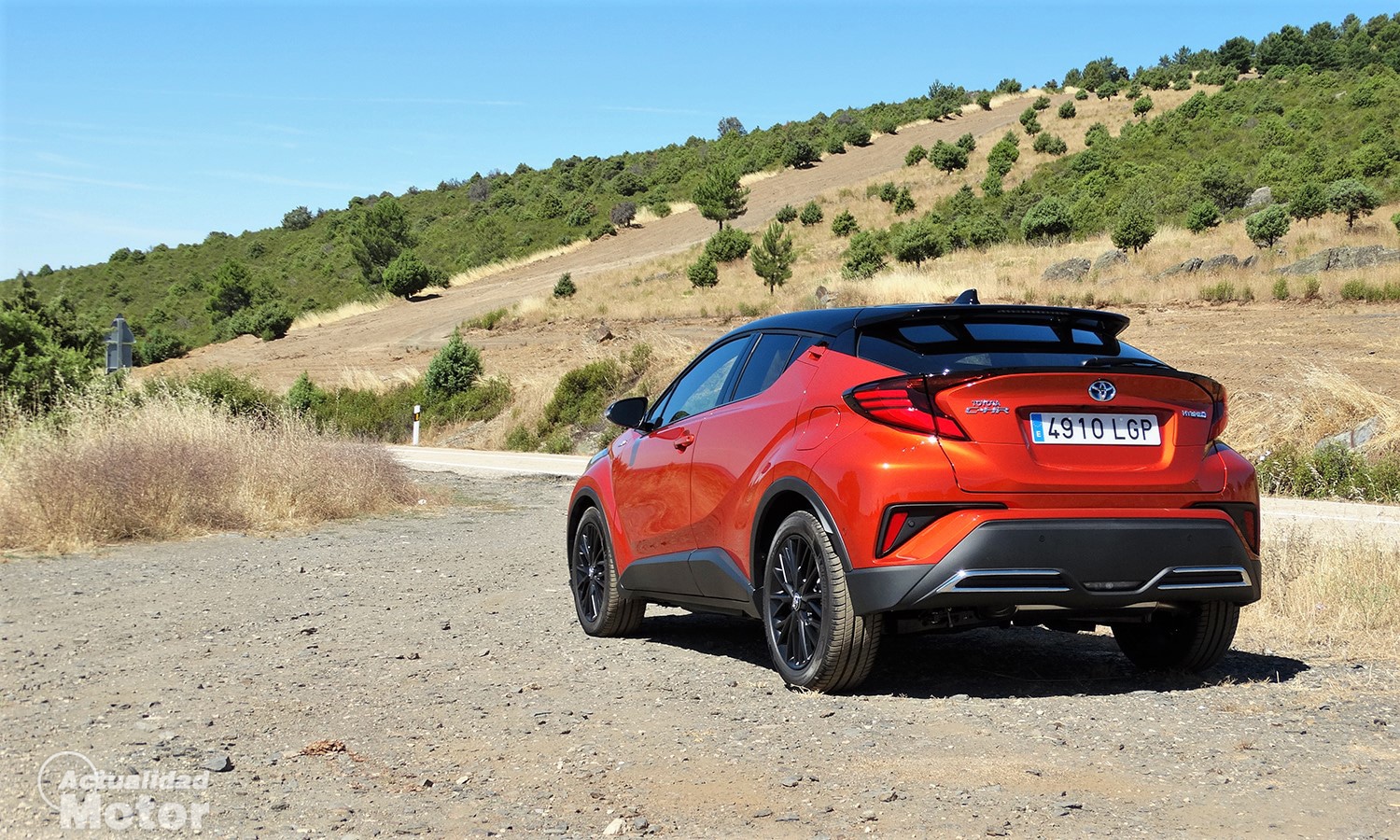
| Version | Finish | Price |
|---|---|---|
| Version | Finish | Price |
| 125H | Active | $25.050 |
| 125H | Advance | $25.800 |
| 180H | Advance | $27.600 |
| 180H | DynamicPlus | $29.900 |
| 180H | Kaji Edition | $29.990 |
Editor's opinion
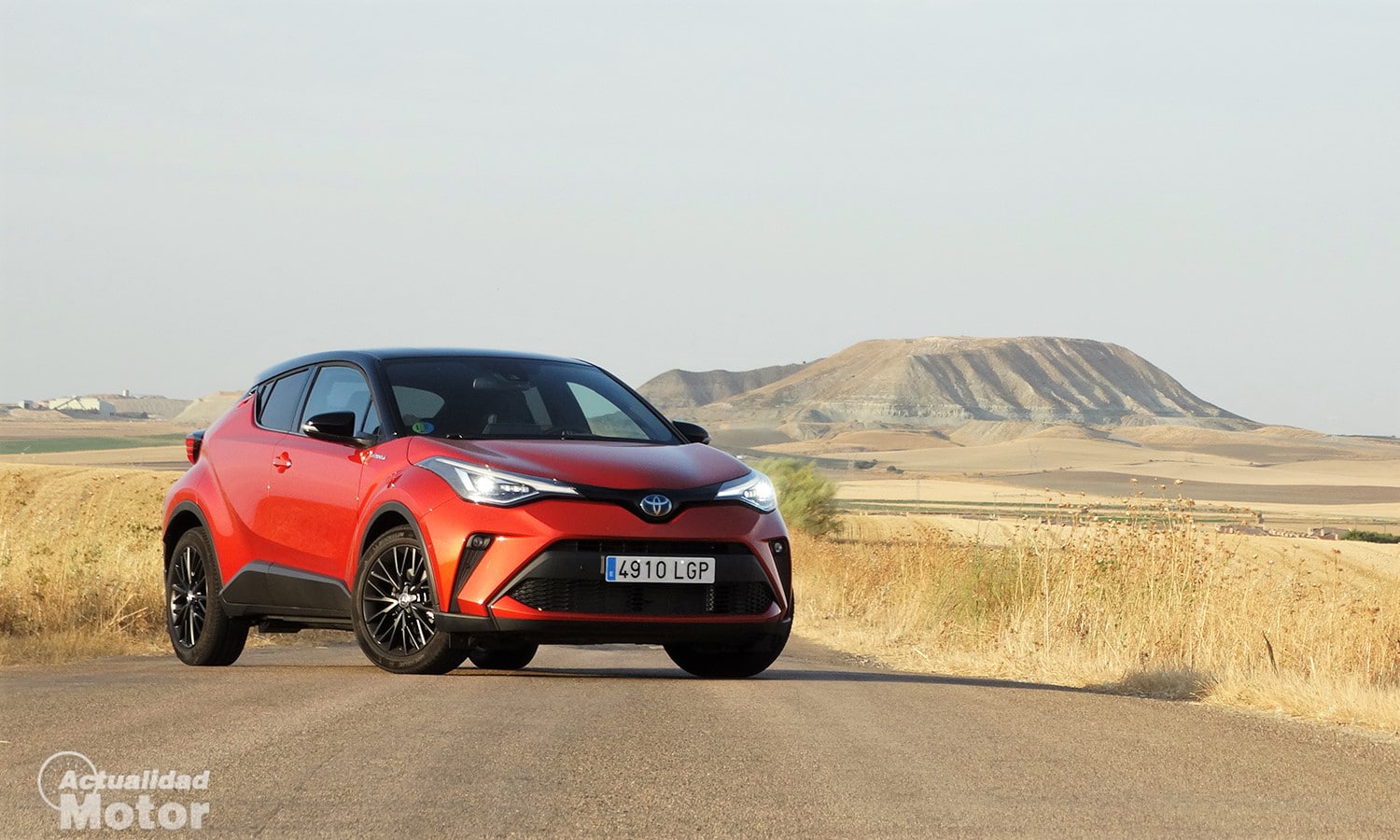
- Editor's rating
- 3 star rating
- Good
- Toyota CHR 180H
- Review of: Diego Avila
- Posted on:
- Last modification:
- Exterior design
- interior design
- front seats
- rear seats
- Trunk
- Spring Suspension
- Consumption
- Comfort
- Price
Pros
- Adjusted consumption
- differentiated design
- safety equipment
Cons
- Interior and trunk space
- Difficulty measuring braking
- Infotainment could be improved











